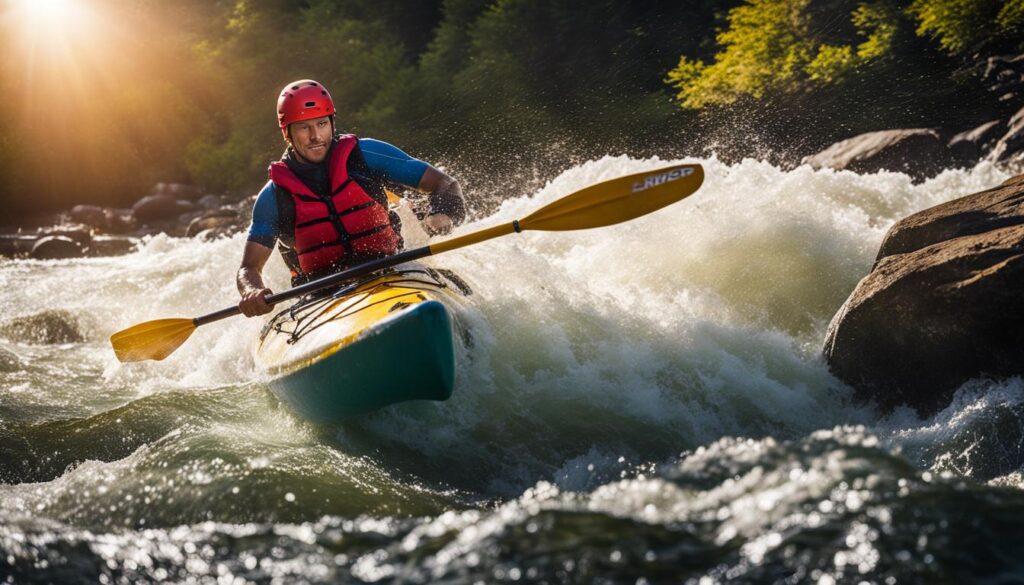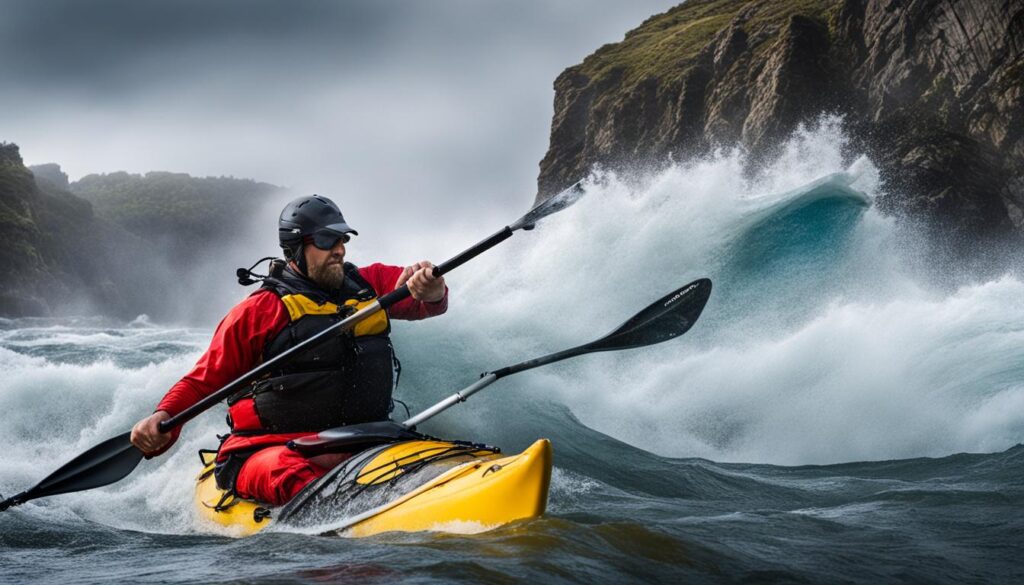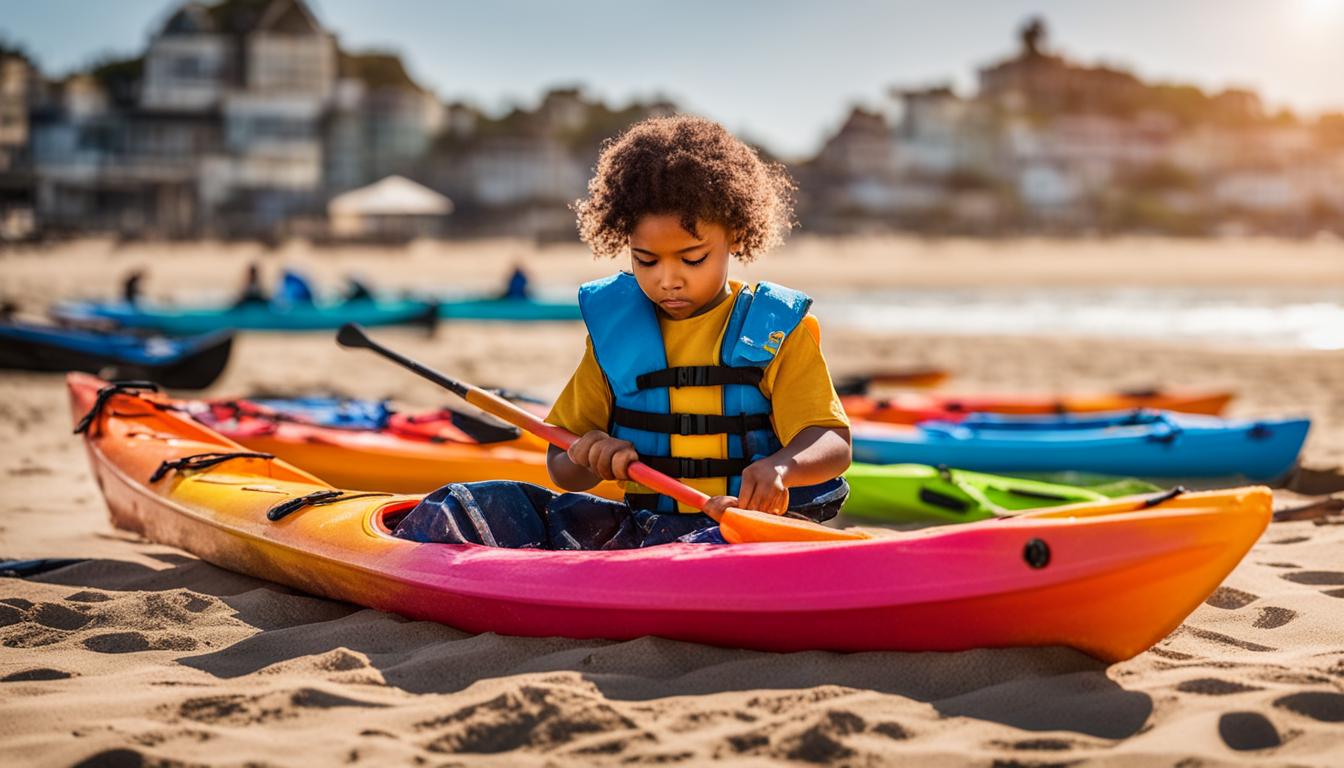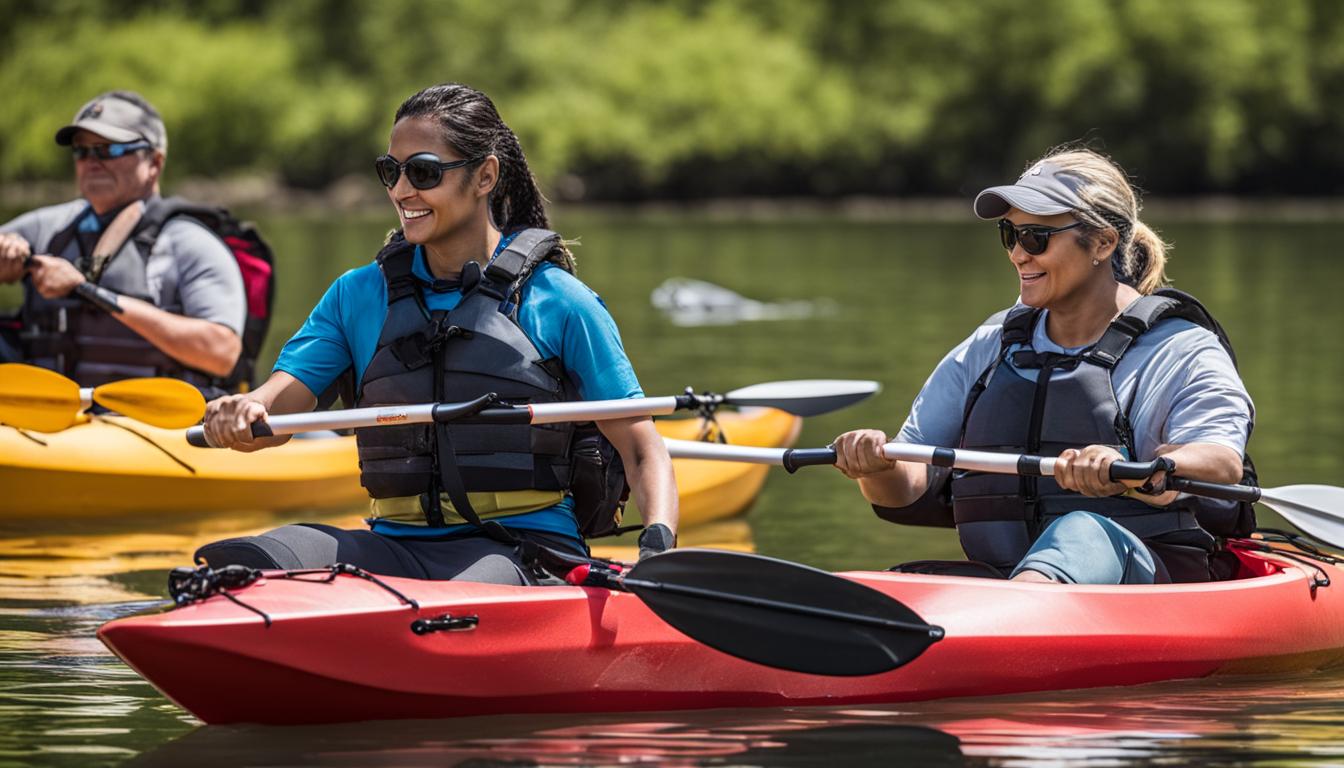Kayaking is a thrilling sport that offers a unique blend of adventure, tranquility, and physical fitness. As you progress in your kayaking journey, you may find yourself wanting to take your skills to the next level. Advanced kayaking techniques can help you unlock your full potential and experience the sport in a whole new light.
This comprehensive guide will explore various facets of advanced kayaking, from understanding the basics to mastering intricate paddle strokes, roll techniques, whitewater kayaking, and safety measures. Whether you aspire to tackle turbulent rapids or embark on extensive sea voyages, this guide will equip you with the techniques and tips you need to excel.
Key Takeaways:
- Advanced kayaking techniques can help you enhance your skills and take your kayaking to the next level.
- Understanding the basics of kayaking, including different types of kayaks and equipment, is crucial for advanced training.
- Physical conditioning, including cardiovascular fitness, upper body strength, core strength, and flexibility, plays an important role in advanced kayaking.
- Mastering different paddle strokes, such as the forward stroke, sweep stroke, draw stroke, bracing stroke, and sculling for support, is essential for advanced maneuverability.
- By consistently practicing and refining your skills, you can develop high-level kayaking abilities and tackle more challenging courses.
Understanding the Basics of Kayaking
Before embarking on the journey of mastering advanced kayaking techniques, it is essential to have a solid understanding of the basics. Familiarizing yourself with the different types of kayaks and their suitability for specific water conditions is crucial. A recreational kayak, for example, may not be suitable for whitewater kayaking. Knowing the various kayaking equipment, such as paddles and safety gear, will ensure that you are well-prepared for any kayaking adventure.
Developing water awareness skills is another fundamental aspect of kayaking. Being able to recognize potential hazards and effectively navigate different types of water is essential for your safety. Understanding basic paddling techniques, such as the forward stroke, backward stroke, and sweep stroke, allows you to propel your kayak efficiently. Additionally, paying attention to body positioning and posture ensures effective paddling and reduces the risk of injuries.
As an avid kayaker, it is important to continually refine and expand your knowledge of the sport. Consider enrolling in advanced kayak training programs or technical kayaking training to further enhance your skills. These specialized programs offer expert guidance and instruction, allowing you to take your kayaking abilities to new heights. Remember, a strong foundation in the basics is the key to unlocking the full potential of advanced kayaking techniques.
Kayak Types and Water Conditions
| Kayak Type | Water Conditions |
|---|---|
| Recreational Kayak | Lakes, calm rivers |
| Whitewater Kayak | Rapid rivers, whitewater |
| Sea Kayak | Ocean, coastal areas |
Table: Different Types of Kayaks and Suitable Water Conditions
Remember, mastering advanced kayaking techniques is an ongoing journey that requires dedication and practice. Take the time to fully grasp the basics before diving into more complex maneuvers. By understanding the fundamentals and honing your skills, you will be well-prepared to tackle the challenges that advanced kayaking has to offer.

Quote: “A strong foundation in the basics is like a compass that guides you through the exhilarating world of advanced kayaking.” – Anonymous
Importance of Physical Conditioning for Kayaking
As you progress in your kayaking journey and aim to master advanced techniques, physical conditioning becomes a crucial aspect of your training. Proper conditioning prepares your body for the physical demands of kayaking and allows you to perform at an expert level. Committing to expert kayaking lessons or kayaking mastery classes will equip you with the knowledge and skills to excel in this exhilarating sport.
Why is physical conditioning important for kayaking?
“Physical conditioning is the cornerstone of becoming a skilled kayaker. It not only enhances your endurance, strength, and flexibility, but also improves your overall performance on the water. Whether you’re embarking on a long-distance sea voyage or navigating challenging whitewater rapids, being in top physical shape will enable you to paddle with precision, power, and confidence.”
To achieve optimal performance, cardiovascular fitness is essential. Engaging in regular aerobic exercise, such as running, cycling, or swimming, will help increase your stamina and endurance during long kayaking trips. Building upper body strength is equally important, as it allows for powerful paddle strokes that propel you through the water. Incorporating exercises that target the muscles in your arms, shoulders, and back will help you develop the required strength.
Core strength is crucial for stability and power while paddling. A strong core provides the necessary support for efficient strokes, allowing you to maintain balance and control. Including exercises that target your abdominal muscles, obliques, and lower back will help strengthen your core and improve your kayaking performance. Additionally, flexibility plays a crucial role in efficient paddling and injury prevention. Incorporating stretching exercises into your conditioning routine will enhance your range of motion and prevent muscle strains or injuries.
Commitment to regular training and conditioning
In order to reach an expert level of kayaking, commitment to regular training and conditioning is essential. Consistency is key, as it allows your body to adapt and improve over time. Design a training plan that includes a mix of cardiovascular exercises, strength training, and flexibility exercises. Gradually increase the intensity and duration of your workouts to continuously challenge your body and improve your performance.
Remember to complement your physical conditioning with appropriate nutrition and hydration. Fueling your body with the right nutrients and staying hydrated will optimize your performance and keep you energized throughout your kayaking adventures. With dedication and perseverance, you’ll develop the physical prowess required to tackle any kayaking challenge that comes your way.
| Benefits of Physical Conditioning for Kayaking | How to Achieve Physical Conditioning |
|---|---|
| Enhanced endurance and stamina | Engage in regular aerobic exercise such as running, swimming, or cycling |
| Improved upper body strength | Incorporate exercises that target the muscles in your arms, shoulders, and back |
| Enhanced core stability and power | Include exercises that target your abdominal muscles, obliques, and lower back |
| Increased flexibility for efficient paddling | Incorporate stretching exercises into your conditioning routine |
| Optimized performance and injury prevention | Commit to regular training and conditioning, complemented with proper nutrition and hydration |

Mastering Different Paddle Strokes
As an advanced kayaker, you are always seeking new challenges and ways to enhance your skills on the water. One crucial aspect of advanced kayaking is mastering different paddle strokes. These strokes not only give you increased control over your kayak but also allow you to navigate through challenging waters with finesse and confidence.
The forward stroke is the foundation of all paddle strokes. It propels your kayak forward and is the most frequently used stroke. By perfecting your forward stroke technique, you’ll be able to maintain a steady and efficient pace during your kayaking adventures.
When it comes to turning your kayak, the sweep stroke is your go-to move. This stroke allows you to gracefully maneuver your kayak in any direction you desire. By mastering the sweep stroke, you’ll be able to navigate through tight spots, avoid obstacles, and explore every corner of the water with ease.
For sideways movement, the draw stroke is essential. This stroke enables you to pull your kayak towards either side, making it a valuable skill for navigating narrow passages or avoiding hazards. By incorporating the draw stroke into your repertoire, you’ll have greater flexibility and control in challenging kayaking courses.
In addition to these foundational strokes, advanced kayakers must also master the bracing stroke and sculling for support. The bracing stroke helps you maintain balance and stability, even in rough waters, while sculling for support allows you to maintain control during quick turns and sudden changes in direction. These skills are crucial for advanced kayaking in challenging conditions.
By dedicating time to practice and perfect these various paddle strokes, you’ll not only enhance your overall kayaking experience but also be well-prepared to take on challenging kayaking courses. Remember, the key to mastery is patience, persistence, and a passion for pushing the boundaries of your abilities.
FAQ
What are some essential advanced kayaking techniques?
Some essential advanced kayaking techniques include mastering intricate paddle strokes, roll techniques, whitewater kayaking, and safety measures.
Why is it important to solidify your grasp of the sport’s basics?
Solidifying your grasp of the sport’s basics is important because it provides a strong foundation for advanced techniques and ensures your safety on the water.
How can I improve my physical conditioning for kayaking?
To improve your physical conditioning for kayaking, focus on cardiovascular fitness, upper body strength, core strength, and flexibility. Regular training and appropriate nutrition are also crucial.
What are some key paddle strokes that advanced kayakers should master?
Some key paddle strokes for advanced kayakers to master include the forward stroke, sweep stroke, draw stroke, bracing stroke, and sculling for support.
How can mastering different paddle strokes enhance my kayaking experience?
By mastering different paddle strokes, you will have increased control, maneuverability, and enjoyment on the water. These skills also prepare you for challenging kayaking courses and situations.





